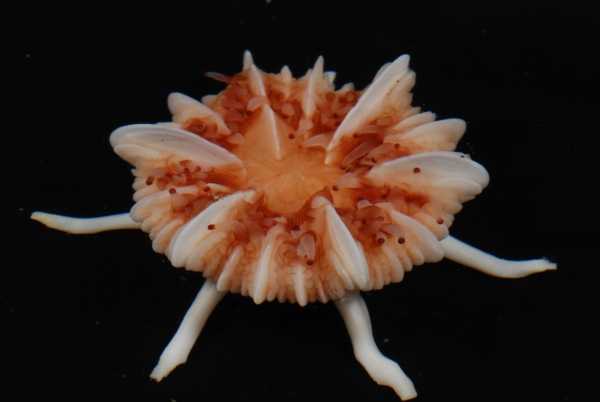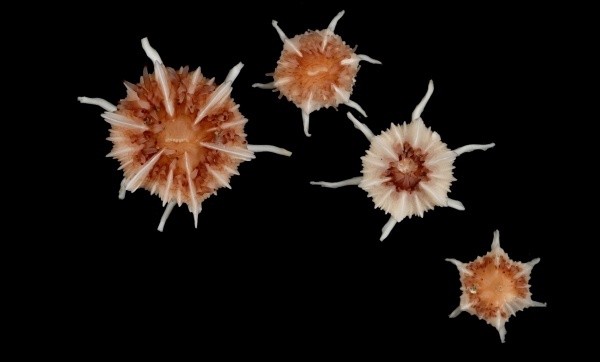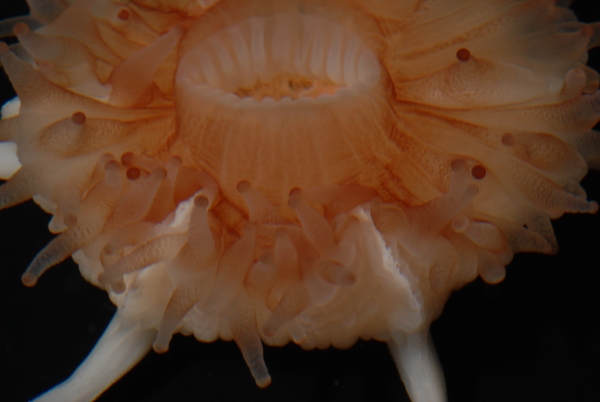This stunning creature is a solitary stony cup coral species, Stephanocyathus spiniger (Marenzeller, 1888), which can be found in northern New Zealand waters and around the Indo-west Pacific from 157-590 m deep with a few outlying records of this species from deeper than 1000 m.
The specimen photographed came from the Bay of Islands, but NIWA also has records in its invertebrate collection database from near the Kermadec Islands and Norfolk Ridge.
This species is distinctive amongst other New Zealand species of solitary cup coral because of its elongated ‘costal spines’ that help keep the cup coral up off the seafloor and anchor it into a soft substrate (Cairns, 1995).
Cup corals are cnidarians so have stinging tentacles that help them to catch their prey. This close up photograph of the coral shows the numerous tentacles that deliver prey to its mouth and into the gastrovascular cavity. Unlike their shallow water relatives, these deep sea cup corals are azooxanthellate, meaning that they don’t have any symbiotic algae (zooxanthellae) so they have to capture all of their food from passing zooplankton to stay alive.
The morphology of the skeleton of the cup coral is what allows taxonomists to determine what species they are. World experts Stephen Cairns from the Smithsonian Institution and Marcelo Kitihara from the University of São Paulo in Brasil have provided an illustrated key to the recent genera and species of the deepsea azooxanthellate Scleractinia:
Illustrated key - azooxanthellate Scleractinia
Reference:
Cairns, S.D., 1995. The marine fauna of New Zealand: Scleractinia (Cnidaria: Anthozoa). New Zealand Oceanographic Institute Memoir, 103: 210 pp.



